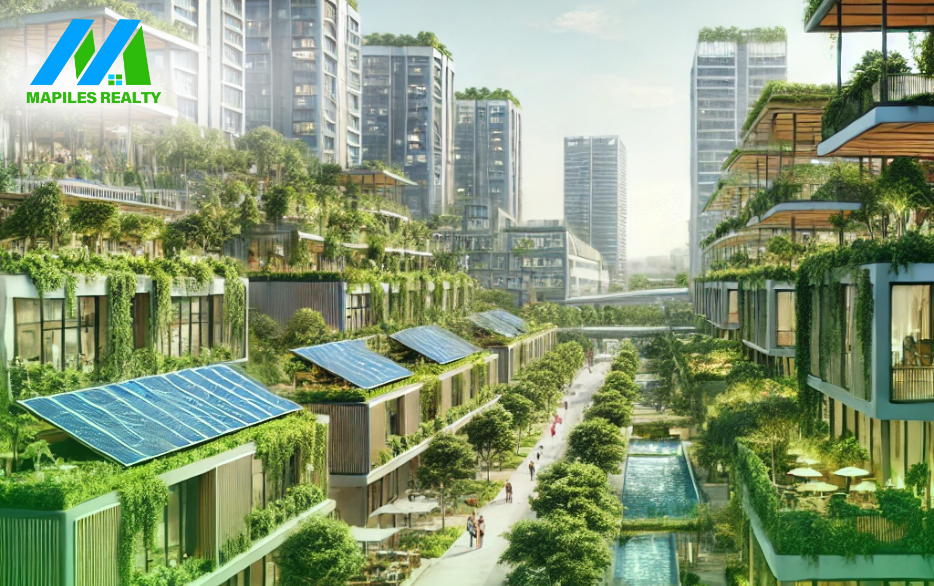The Philippine real estate industry is shifting towards sustainability. Developers are now focusing on eco-friendly designs to reduce environmental impact and promote healthier living spaces.
Why Sustainability Matters in Real Estate
Climate change is a growing concern, and the real estate sector plays a significant role in energy consumption and carbon emissions. Sustainable developments help reduce waste, conserve energy, and create healthier environments.
More homebuyers and investors are looking for green-certified properties. People want homes and offices that are cost-efficient, environmentally responsible, and future-proof.
Green Building Certifications in the Philippines
One of the leading green certification programs in the country is the Building for Ecologically Responsive Design Excellence (BERDE) system. BERDE evaluates buildings based on sustainability, energy efficiency, and resource management.
Another international standard adopted by developers is Leadership in Energy and Environmental Design (LEED). LEED-certified buildings follow strict environmental guidelines to ensure sustainability.
Energy-Efficient Buildings
Developers are now integrating energy-efficient solutions into their projects. These include solar panels, LED lighting, and smart energy management systems.
Energy-efficient buildings help homeowners and businesses lower electricity bills. They also reduce dependence on fossil fuels, which contributes to a cleaner environment.
Eco-Friendly Materials and Construction Practices
Sustainable real estate goes beyond energy efficiency. Developers are now using eco-friendly materials like recycled wood, bamboo, and low-carbon cement.
Construction waste management is also a priority. Many companies are recycling construction debris and using prefabricated materials to minimize waste.
Green Spaces and Urban Gardens
Modern developments now include green spaces such as parks, rooftop gardens, and vertical forests. These provide fresh air, reduce heat, and promote mental well-being.
Urban gardens in condominiums and office buildings allow residents to grow their own food. This not only encourages sustainability but also improves food security.
Water Conservation and Rainwater Harvesting
Water scarcity is a growing issue in the Philippines. Many real estate projects now incorporate water-saving technologies such as rainwater harvesting and greywater recycling.
These systems collect and filter rainwater for non-drinking purposes like watering plants and flushing toilets. This helps conserve freshwater and reduces utility costs.
Smart Homes and Sustainable Technologies
The rise of smart home technology is making sustainable living more accessible. Automated systems control lighting, temperature, and security to optimize energy use.
Smart sensors and AI-powered devices help residents monitor and reduce their carbon footprint. These innovations make homes more comfortable and energy-efficient.
The Role of Developers in Sustainable Real Estate
Top real estate developers in the Philippines are leading the way in sustainability. Ayala Land, SM Development Corporation (SMDC), and Megaworld have launched eco-friendly townships and green buildings.
These developers incorporate sustainable practices in construction, landscaping, and community planning. Their efforts help set new standards for responsible real estate development.
The Rise of Eco-Friendly Townships
Eco-friendly townships are designed with sustainability in mind. These communities prioritize green spaces, pedestrian-friendly roads, and efficient public transport systems.
Examples of such developments include Nuvali in Laguna and Arca South in Taguig. These projects promote a balance between urban living and environmental conservation.
Affordable Green Housing
Sustainability is not just for luxury developments. More affordable housing projects are now integrating eco-friendly features like natural ventilation and solar panels.
Government programs are also supporting sustainable housing for low-income families. These initiatives aim to provide eco-friendly homes that are both affordable and efficient.
The Impact of Sustainability on Property Value
Green-certified properties tend to have higher resale values. Buyers and tenants are willing to pay more for homes that offer energy savings and a healthier environment.
Sustainable developments are also more resilient to climate-related risks. This makes them a smart investment for the long term.
Challenges in Sustainable Real Estate
Despite the benefits, there are challenges in implementing sustainable real estate. High costs of eco-friendly materials and technologies can be a barrier for some developers.
Lack of awareness and government incentives also slow down adoption. More policies and education are needed to encourage sustainable practices in the industry.
Future Trends in Sustainable Real Estate
The future of real estate in the Philippines is green. More developers are expected to adopt smart technology, renewable energy, and eco-friendly designs.
Sustainable tourism developments are also on the rise. Resorts and hotels are now incorporating green building practices to attract eco-conscious travelers.
Conclusion
Sustainable real estate is no longer just a trend—it’s the future. Developers, investors, and homebuyers are all contributing to a more eco-friendly and resilient Philippines.
By embracing sustainability, the real estate industry can create communities that are healthier, more efficient, and better for the environment. The shift towards green developments is a step towards a more sustainable and livable future for all.





